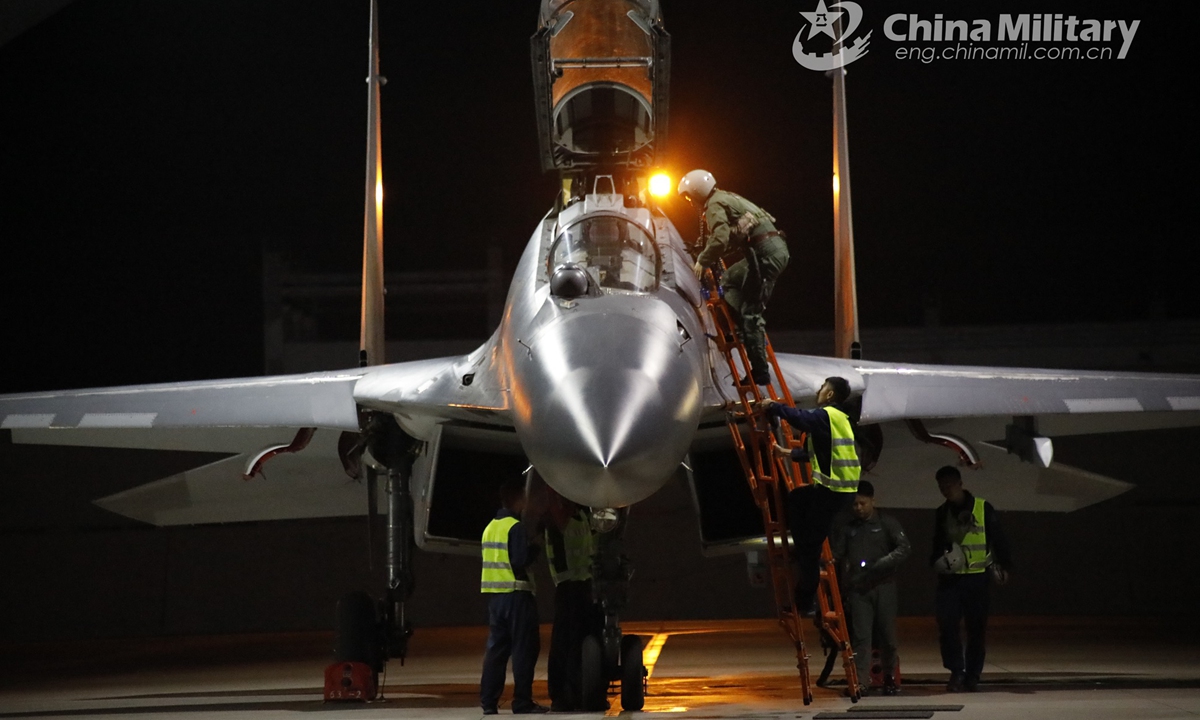Indigenous airborne munitions dispenser can paralyze airfield in one shot
By Liu Xuanzun Source: Global Times Published: 2020/8/16 19:00:55

A pilot assigned to an aviation regiment under the PLA Air Force climbs into the cockpit of his fighter jet prior to a night flight training exercise in late June, 2020. (eng.chinamil.com.cn/Photo by Tang Huaihui)
China has revealed a type of domestically developed airborne munitions dispenser, a hybrid weapon that lies between an air-to-ground missile and a guided bomb droppable by an aircraft from a safe distance, that can release hundreds of submunitions that cover a large area. This kind of weapon can effectively paralyze an airfield in one shot, leaving enemy warplanes grounded or destroyed, experts said on Sunday.
Formally classified as a guided glide dispenser bomb, this highly accurate, modularized weapon weighs 500 kilograms. While it looks like a missile, it has a square cross-section to hold more submunitions. This design can also reduce the weapon's radar cross-section, enhancing the weapon's stealth capability, making it more difficult to intercept, according to a report by China Central Television (CCTV) on Saturday.
When dropped, the dispenser can open its wings, which can provide extra lift force and controllability and allow it to have a range of more than 60 kilometers, the CCTV report said, noting that this means the aircraft carrying it can safely drop the weapon without entering the enemy's air defense zone.
Each dispenser can carry 240 submunitions of six types, which when released will cover more than 6,000 square meters, CCTV quoted a senior engineer at the weapon's manufacturer, China North Industries Group Corp (NORINCO), as saying.
When attacking groups of tanks and armored vehicles, the dispenser can use anti-tank submunitions that can penetrate tanks' armor from the top, or it can equip regional lockdown submunitions when attacking large facilities like airfields, CCTV reported.
A typical munitions dispenser like this can disable an airfield for an extended period with only one shot, because the sheer number of submunitions means the whole runway will be destroyed, and it is also possible that some of the submunitions will be mines, which will make attempts to repair the runway very risky, a Chinese military expert told the Global Times on Sunday on condition of anonymity.
This will provide crucial battle opportunities, because it means the enemy would not be able to make any warplane sortie, and the user of the dispenser can seize air superiority and gain tactical and even strategic advantages, the expert said.
A separate CCTV report in March 2019 showed a Chinese J-16 fighter jet equipped with a weapon that looked very like a munitions dispenser. The report speculated at that time that the weapon had been commissioned into the People's Liberation Army (PLA) Air Force.
In addition to the J-16, China's JH-7 fighter bomber and H-6 bomber could also be equipped with the dispenser, the expert said.
Foreign media reported on Saturday that the island of Taiwan has officially signed an agreement with the US to buy 66 F-16V fighter jets. Chinese mainland military analysts said that if a reunification-by-force operation breaks out, the PLA would destroy Taiwan's airfields and command centers, giving the F-16Vs no chance to even take off, and giving those already in the air no place to land.
NORINCO has also developed airborne munitions dispensers for export, including the TL500 that made its appearance at Airshow China in previous years, Shanghai-based news website eastday.com reported on Sunday.
Posted in: MILITARY